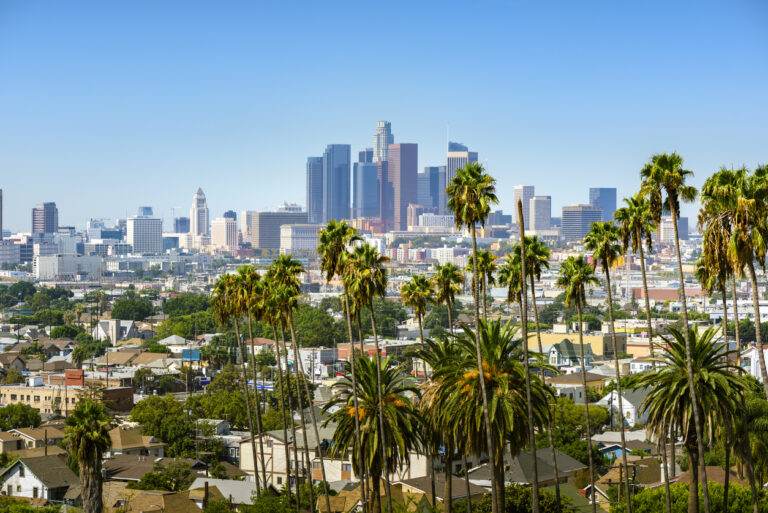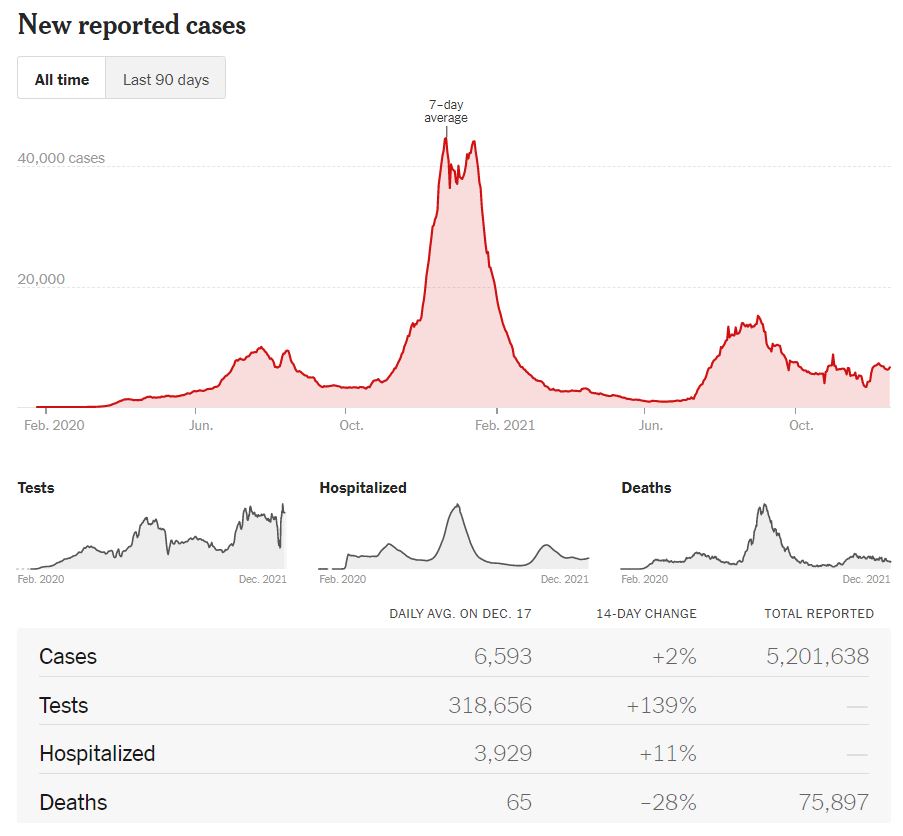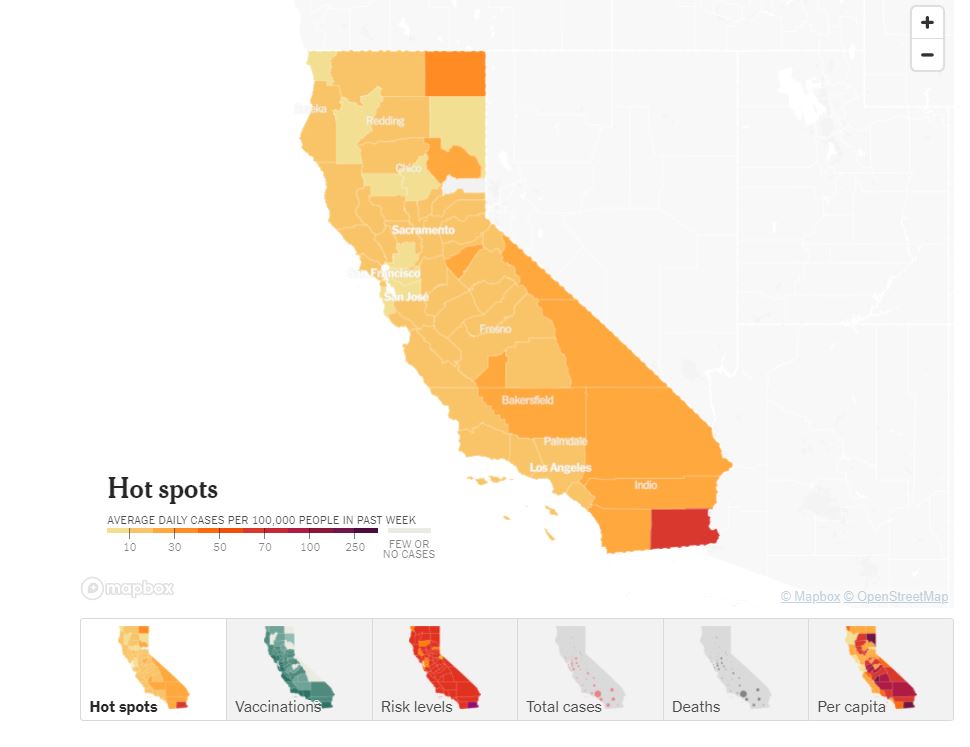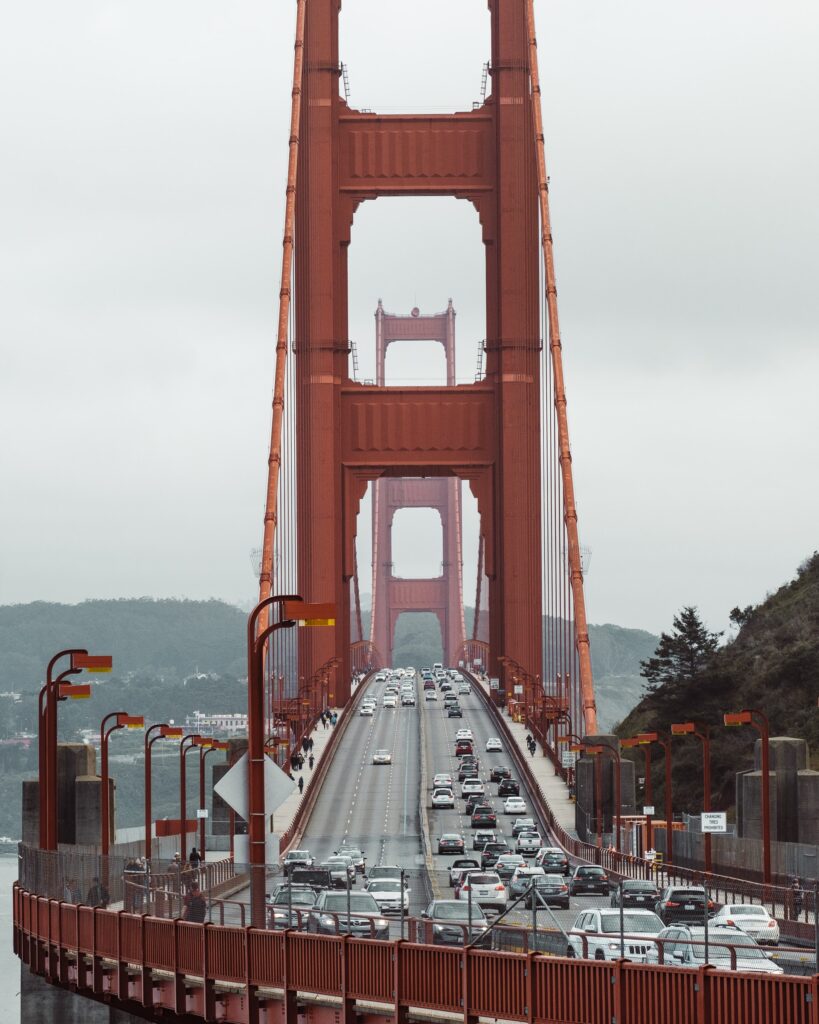Californians will once again be compelled to wear masks at indoor public areas from Dec. 15 to Jan. 15, regardless of vaccination status, state health officials announced Wednesday.
According to state data, COVID hospitalizations have increased 15% statewide in the last three weeks, from 3,439 patients on Nov. 23 to 3,971 on Dec. 17.
Latest updates
December 18 – Vaccinated and unvaccinated workers will be treated equally to protect customers
Authorities in California no longer believe that a worker who comes into close contact with a positive COVID-19 case is completely immune to the virus.
In such cases, both the unvaccinated and the vaccinated would be barred from the workplace to safeguard themselves, their customers, and their coworkers.
This is probably one of the most significant modifications to the California Occupational Safety and Health Standards Board.
Even if they test negative, vaccinated but asymptomatic workers would be required to stay home for 14 days under the revised temporary guidelines.
They must wear masks and stay 6 feet (1.8 meters) away from everyone else for two weeks if they return to work.
November 12 – All Californians are now eligible for a booster shot
All fully vaccinated adults should be able to get a booster COVID-19 vaccine if they wish so, says a letter from the California Department of Public Health directed to health care providers.
At least six months need to have passed since their second dose of the two-shot Pfizer or Moderna vaccine. If they got vaccinated with Johnson & Johnson, there must be at least a two-month gap between the shots.
The CDC recommends booster shots for anyone aged 65 or older and adults who live or work in high-risk settings or have underlying conditions.
However, the director of CDPH, Tomás J. Aragón, stated that patients should be allowed to self-determine whether or not they are at high risk of getting infected.
Source: NPR News
Stats & Current COVID-19 situation in California
In total, California has reported 5,201,638 cases and 75,897 deaths.
Vaccination progress in California
As of December 18, 63.5M Californians have received at least one dose, while 25.8M of them have been fully vaccinated. That is around 65.3% of the population of the Golden State.
COVID-19 hotspots in California
Is it safe to travel to Los Angeles?
Yes, traveling to Los Angeles at the moment is generally safe. The city is open to both domestic and international travelers. But, several rules must be followed. As long as you have been fully vaccinated, you don’t have to undergo quarantine when visiting L.A.
International visitors must get tested before the beginning of their journey. Also, masks should be worn in all indoor public spaces.
Is it safe to travel to San Francisco?
The same rules apply to San Francisco. Establishments and other economic activities have reopened in San Francisco as well.
At the same time, there is no high number of incidences. Traveling to San Francisco is pretty safe. You are also obligated to wear a mask in all indoor public places. If you are not sure, follow the CDC’s travel recommendations.
Why travel to California during COVID?
California is a safety COVID-19 champion. It’s one of the states that has vaccinated most of its citizens so far. Coronavirus cases also remain relatively low.
Besides, there are plenty of natural wonders to see where you are likely to remain COVID-free. From beautiful state parks and forests to surfing spots and camping sites, California is a good option for travelers even in times of pandemic.
There are no county tiers, capacity limits, or physical distancing requirements. On the other hand, vaccination, masks, disinfecting, and testing are still recommended.
Updates archives
September 20 – California reports the lowest COVID-19 positivity rate in the country
California, which was the first state to report 2 million coronavirus cases in December 2020, is now a state with the lowest COVID-19 incidence, according to data collected by Johns Hopkins University.
On Saturday, September 18, 24.99 new cases were registered per 100,000 inhabitants. Close behind, there is Maryland with 25.34 new infections for every 100,000 people, and New Jersey with 26.74.
On the other hand, Florida is the state with the highest positivity rate – around 262,30 daily new infections per 100,000 people. That is ten times more than the numbers reported in California.
Source: CBS News
August 30 – California reports optimistic COVID-19 trends
The number of daily infections seems to be dropping in California. And according to the state’s health officials, there have been some ‘encouraging’ signs in the recent coronavirus trends. Infections are plateauing in areas with higher vaccination rates, they added.
On the other hand, COVID-19 hospitalizations are still on the rise. However, on Wednesday, August 25, the CDC published a forecast that the hospitalizations are about to stabilize.
Even for the good news, the state’s public health department officials warn that California’s citizens shouldn’t let their guard down. The usual safety measures are still recommended, including masks, social distancing, testing, tracking, and quarantining.
Source: CNN
August 11 – California to require education and healthcare workers to be vaccinated or undergo weekly testing
California is concerned over the new, more contagious Delta variant. On Wednesday (August 11), Gov. Gavin Newsom announced that all teachers and school staff must get vaccinated or undergo weekly testing.
According to NPR News, the same will apply to all health care workers. Therefore, California is the first state in the U.S. to require such measures.





